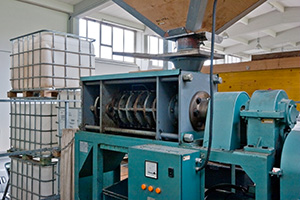How to calculate the biofuel greenhouse gas emissions
Annex V part C of the Renewable Energy Directive (2009/28/EC) contains the rules for the calculation of an actual value of greenhouse gas (GHG) emissions. Total GHG emissions from the use of the (bio)fuel consist of
- emissions from the use of the extraction of raw materials
- annulised emissions fom carbon stock changes caused by land-use change
- emissions from processing
- emissions from transport and distribution
- emissions from the fuel in use (to be zero for biofuels)
- emission saving from soil carbon accumulation via improved agricultural management
- emission saving from carbon capture and replacment
- emission saving from excess electricity from cogeneration.
Emissions from the manufacture of machinery and equipment shall not be taken into account.
Input numbers and standard conversion values
Our downloadable Excel files contain two kind of numbers: “input numbers” and “standard conversion values” or more briefly “standard values”.
Input numbers are for instance the amount of fertiliser to grow rape or the amount of electricity and natural gas to convert rapeseed into biodiesel. Standard conversion values are for instance the emissions of nitrous oxide or carbon dioxide per kilogramme of nitrogen fertiliser or per megajoule of natural gas. These are required to convert input numbers into GHG emissions. Companies normally can influence and measure input numbers, but cannot influence and/or measure standard conversion values. Standard conversion values have also been calculated using LCA analysis of both the processes that supply the inputs (like N-fertiliser and natural gas) and their emissions at combustion.
The input numbers and standard values in our downloadable Exce files come from three sources
- List of input data provided by the JEC consortium* (biofuel pathway RED method 14Nov2008.xls),
- List of standard values as also provided by the JEC consortium taken from the Well-to-Wheel study, WTT Appendix 1,
- The E3database of LBST* for some numbers causing only small GHG emissions that have not been published by the JEC consortium, and for some numbers that were slightly different in the calculations of the JEC consortium as input to the Commission for the default values, as compared to the sources 1 and 2 above.
Inconsistent use of global warming potentials
During our project we found an inconsistency between the way the biofuel GHG default values have been calculated, and the methodology as listed in Annex V part C. The input provided by the JEC consortium to the Commission (from which the Commission calculated its default values) used global warming potentials of 25 for CH4 (methane) and 298 for N2O (nitrous oxide), whereas the Annex V part C prescribes that global warming potentials (GWP) of 23 for CH4 and 296 for N2O should be used. In our Excel calculation we did the calcuations for both ways.
Our Excel file can therefore be used to make two kinds of calculations:
- Calculations using the numbers that must be used following the methodology as given in Annex V part C of Directive 2009/28/EC and in Annex IV part C of Directive 2009/30/EC. These numbers include GWP values of 23 for CH4 and 296 for N2O.
- Calculations using the data as were delivered by the JEC consortium to the Commission. These calculations exactly reproduce the Annex V default values. In order to come to these results, the GWP values of 25 for CH4 and 298 for N2O are used.
In all Excel calculation sheets a choice can be made between these two options by clicking one of the options in the yellow-coloured box at the top right of the sheet.
More information on EU biofuel policy and legislation is available at the EC Renewable Energy website under the headings Biofuels and Transparency Platform.
*Partners of the JEC consortium are JRC - the EU Commission's Joint Research Centre, EUCAR - European Council on Automotive R&D and CONCAWE - The Oil Companies’ European Association for Environment, Health and Safety in Refining and Distribution
*Ludwig Bölkow System Technik (LBST) is a consultant to the JEC consortium as well as a subcontractor to the BioGrace project.


